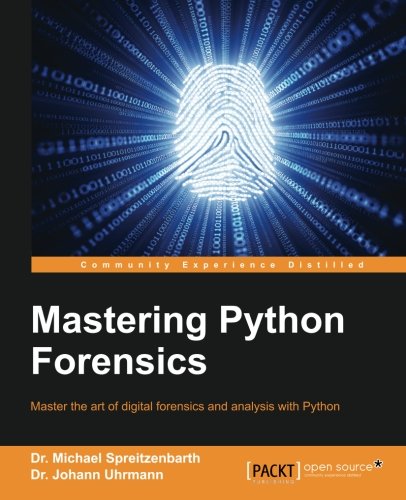

Most ebook files are in PDF format, so you can easily read them using various software such as Foxit Reader or directly on the Google Chrome browser.
Some ebook files are released by publishers in other formats such as .awz, .mobi, .epub, .fb2, etc. You may need to install specific software to read these formats on mobile/PC, such as Calibre.
Please read the tutorial at this link. https://ebooknice.com/page/post?id=faq
We offer FREE conversion to the popular formats you request; however, this may take some time. Therefore, right after payment, please email us, and we will try to provide the service as quickly as possible.
For some exceptional file formats or broken links (if any), please refrain from opening any disputes. Instead, email us first, and we will try to assist within a maximum of 6 hours.
EbookNice Team

Status:
Available4.5
38 reviewsMaster the art of digital forensics and analysis with Python
About This BookIf you are a network security professional or forensics analyst who wants to gain a deeper understanding of performing forensic analysis with Python, then this book is for you. Some Python experience would be helpful.
What You Will LearnDigital forensic analysis is the process of examining and extracting data digitally and examining it. Python has the combination of power, expressiveness, and ease of use that makes it an essential complementary tool to the traditional, off-the-shelf digital forensic tools.
This book will teach you how to perform forensic analysis and investigations by exploring the capabilities of various Python libraries.
The book starts by explaining the building blocks of the Python programming language, especially ctypes in-depth, along with how to automate typical tasks in file system analysis, common correlation tasks to discover anomalies, as well as templates for investigations. Next, we'll show you cryptographic algorithms that can be used during forensic investigations to check for known files or to compare suspicious files with online services such as VirusTotal or Mobile-Sandbox.
Moving on, you'll learn how to sniff on the network, generate and analyze network flows, and perform log correlation with the help of Python scripts and tools. You'll get to know about the concepts of virtualization and how virtualization influences IT forensics, and you'll discover how to perform forensic analysis of a jailbroken/rooted mobile device that is based on iOS or Android.
Finally, the book teaches you how to analyze volatile memory and search for known malware samples based on YARA rules.
Style and approachThis easy-to-follow guide will demonstrate forensic analysis techniques by showing you how to solve real-word-scenarios step by step.